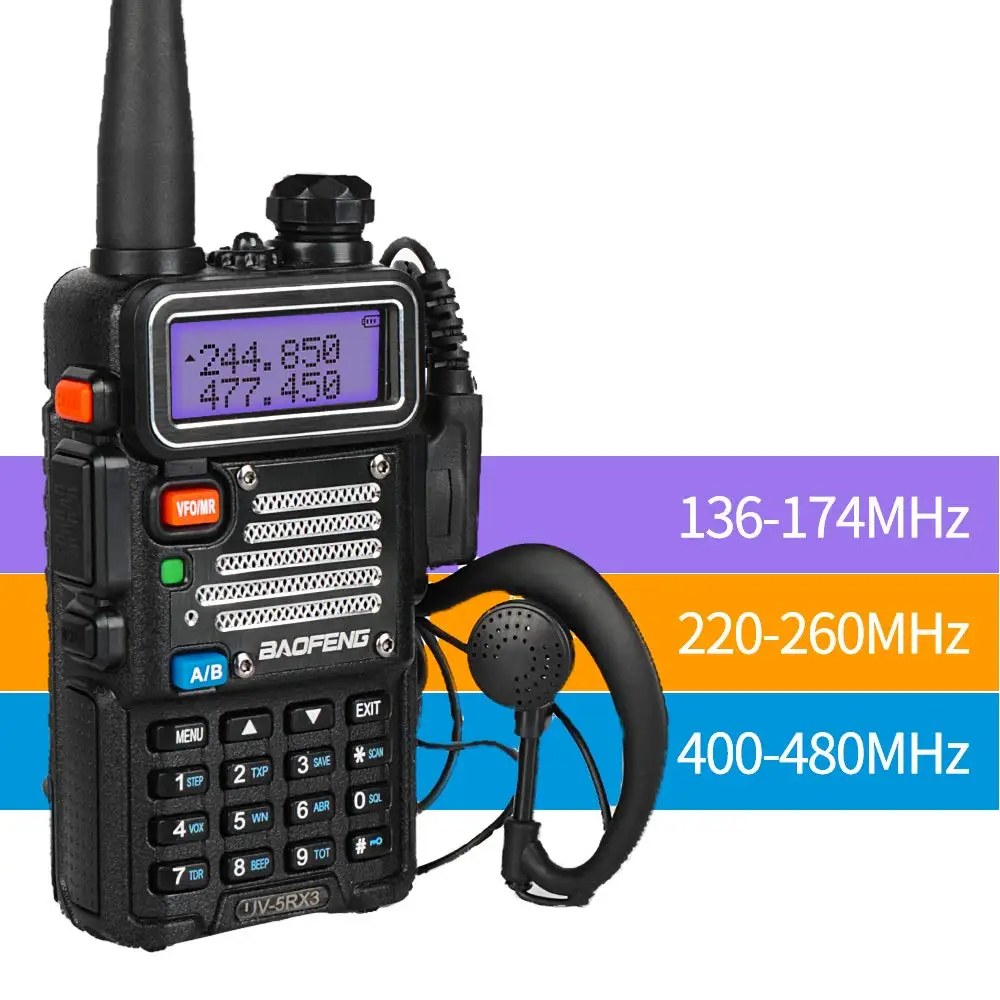Dual microphone technology is an effective method for environmental noise reduction, which suppresses environmental noise by configuring two microphones in the walkie talkie. These two microphones are usually designed with one for capturing the user’s voice and the other for capturing background noise. The following is the working principle of a dual microphone noise reduction system:

Sound capture: The main microphone (or near-field microphone) is mainly responsible for capturing the user’s voice, while the secondary microphone (or far-field microphone) is used to capture surrounding environmental noise.
Sound analysis: The noise reduction algorithm inside the walkie talkie will analyze the sound signals captured by two microphones. By comparing the signals of two microphones, the algorithm can identify which sounds are user generated speech and which are background noise.
Sound processing: Once background noise is recognized, the denoising algorithm generates a sound signal that is opposite in phase to the noise. When this inverted signal is superimposed with the original noise signal, it can achieve phase cancellation of the sound, thereby reducing or eliminating noise.
Output clear speech: After processing, the intercom will output a speech signal with suppressed noise. In this way, the voice heard by the receiver will be clearer, while the background noise will be significantly reduced.
Effect display
Analysis of audio data before and after processing using the dual microphone noise reduction algorithm:

In the front, the person wearing headphones speaks on their own, while in the back, people around them are speaking. It can be seen that they can pick up the voices of those speaking and filter out the voices of those around them. Preliminary testing shows that the noise reduction effect is impressive.

The spectrogram can be seen more clearly.
The advantage of a dual microphone noise reduction system is that it can effectively reduce environmental noise interference without sacrificing speech quality. This technology is becoming increasingly common in various walkie talkies, especially in situations that require communication in noisy environments, such as construction sites, airports, factories, etc. Through this technology, users can enjoy a clearer and more reliable communication experience.
The disadvantage of a dual microphone noise reduction system is also evident: it requires a relatively high distance between the two microphones of the device. The requirements for acoustic structure are relatively high, and the scene requirements are strict. The two microphones cannot be too close together, and the distance between the two microphones and the speaker cannot be too far. If they are too far away, the angle will be very small and cannot be distinguished at all.
